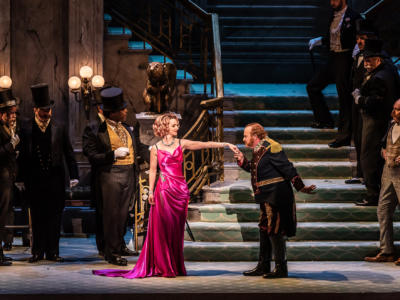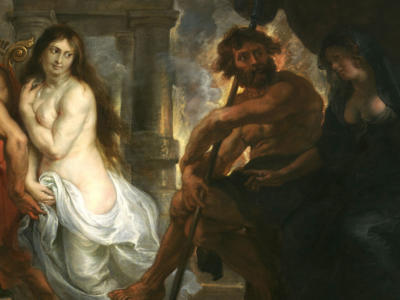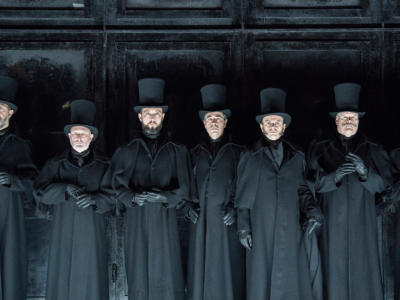Operas that shook society
In the eighteenth and nineteenth centuries, operas could not be performed in front of audiences unless they had passed a process of censorship. Many operas we know and love today are different versions of the operas their composers had imagined thanks to the scrutiny of the sensitive censors of the age.
Although these four operas below managed to pass censorship (with significant changes, no doubt), they still managed to cause great controversy. Take a look at four major operas that shook society.
The Marriage of Figaro – Mozart
Video
If the public reaction to the scandalous and politically charged play Wolfgang Amadeus Mozart based his opera on was anything to go by, The Marriage of Figaro was always going to be controversial. Pierre Beaumarchais’s La Folle Journée, ou Le Mariage de Figaro was written during a time of political volatility, just before the French Revolution. It took nearly 5 years to persuade Parisian censors to permit it to be performed.
It was the opera’s librettist, Lorenzo da Ponte, who convinced Emperor Josef II to allow Mozart to turn Beaumarchais’s play into an Italian opera. One condition was that ‘anything that might offend good taste or public decency’ be removed. The librettist toned down the anti-establishment messaging and commentary on the social injustices between upper and lower classes.
One of the most notable changes was that of Figaro’s monologue in the play where he openly criticises the privileges claimed by the aristocracy. This was completely omitted from the opera in favour of an aria about the fickleness of women.
When it was finally staged in 1786, Mozart’s opera was so well received, the emperor had to put a limit on the number of encores. It was an even greater success in Prague, some six months later. To this day, over 200 years after its first performance, The Marriage of Figaro remains one of the most frequently performed operas in the world.
ENO Trailer
Video
Overture
Video
‘How could you be so cruel’
(duet from Act 3)
Video
Salome - Strauss
Video
Perhaps the most controversial opera of the twentieth century, Richard Strauss’s Salome caused dispute long before the rehearsals even began. The Oscar Wilde play that the opera is based on was banned by the then Lord Chamberlain for the blasphemous use of biblical characters. This ban was not lifted for more than forty years.
When it was heard that Strauss’s Salome was coming to London, thousands of letters of complaint were written by concerned members of the public. The question of whether or not the opera would be performed was even brought before parliament.
As was the norm of the time, Strauss had to make some significant changes to his opera before it was allowed to be shown in certain countries. For example, in order for the piece to be put on in Covent Garden, Jokanaan’s (John the Baptist) name was changed to ‘The Prophet’, a less biblical alternative. The shocking scene in which Salome enters with Jokanaan’s head was also adapted in favour of a version that instead featured a cloth-covered platter.
It was not just audiences that were shocked with the gruesome storyline. The first Salome, Maria Wittich, agreed to sing the role, but refused to do the famous ‘Dance of the Seven Veils’ or kiss the severed head of Jokanaan.
Tristan and Isolde - Wagner
Video
After it’s (delayed) premiere, Richard Wagner’s Tristan and Isolde received a significant amount of high-profile criticism. German musician Clara Schumann, declared the opera as ‘the most repugnant thing I’ve ever seen or heard’. Composer Brahms claimed just looking at the score put him in a bad mood.
Wagner himself knew the opera was shocking. He wrote to his mistress, Mathilde Wesendonck, declaring that the opera was fearful, and that if performed properly was bound to turn people mad – he wasn’t wrong. At the first performance, men were said to remove their women from the theatre, and even a priest ran out in horror. More shocking than that, Wagner’s first Tristan, Ludwig Schnorr von Carolsfeld, died weeks after the premiere – prompting speculation the stress of the role killed him. This theory was fuelled by the fact that two conductors collapsed and later died after conducting the second act.
To modern-day audiences and performers, of course, Tristan and Isolde is far less shocking, we can now appreciate the beauty of the complex score and the tragic love story between the princess, Isolde and the knight, Tristan.
Lady Macbeth of Mtsensk - Dmitri Shostakovich
Video
After the review was published, Lady Macbeth of Mtsensk was pulled from the Soviet stages for nearly 30 years, until a revised version called Katerina Izmailova returned to the stage. In recent times, the original version has been reintroduced to the repertoire.
In 1987 the ENO held the UK premiere of Lady Macbeth of Mtsensk, fifty years after Shostakovich first premiered his notorious work.



